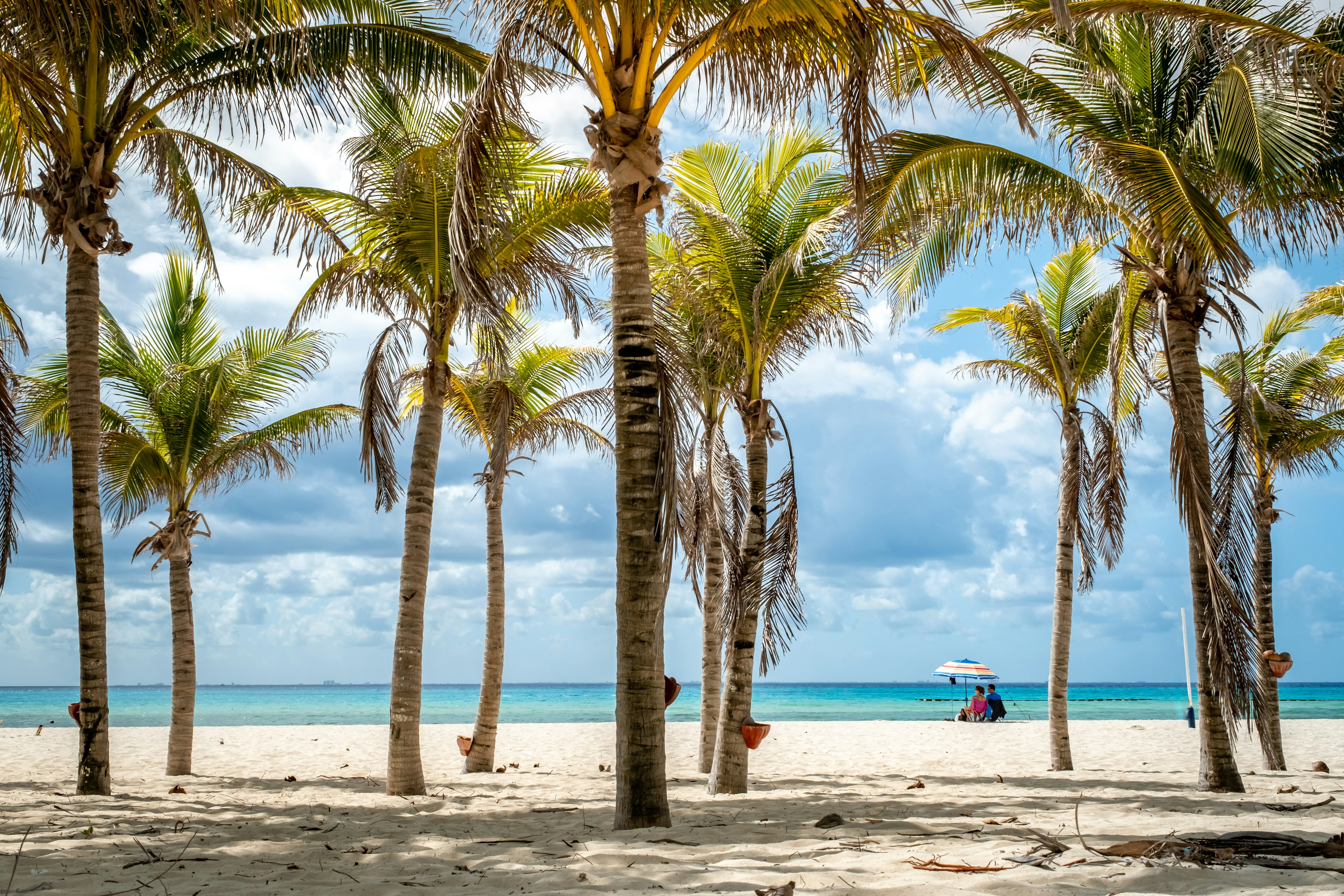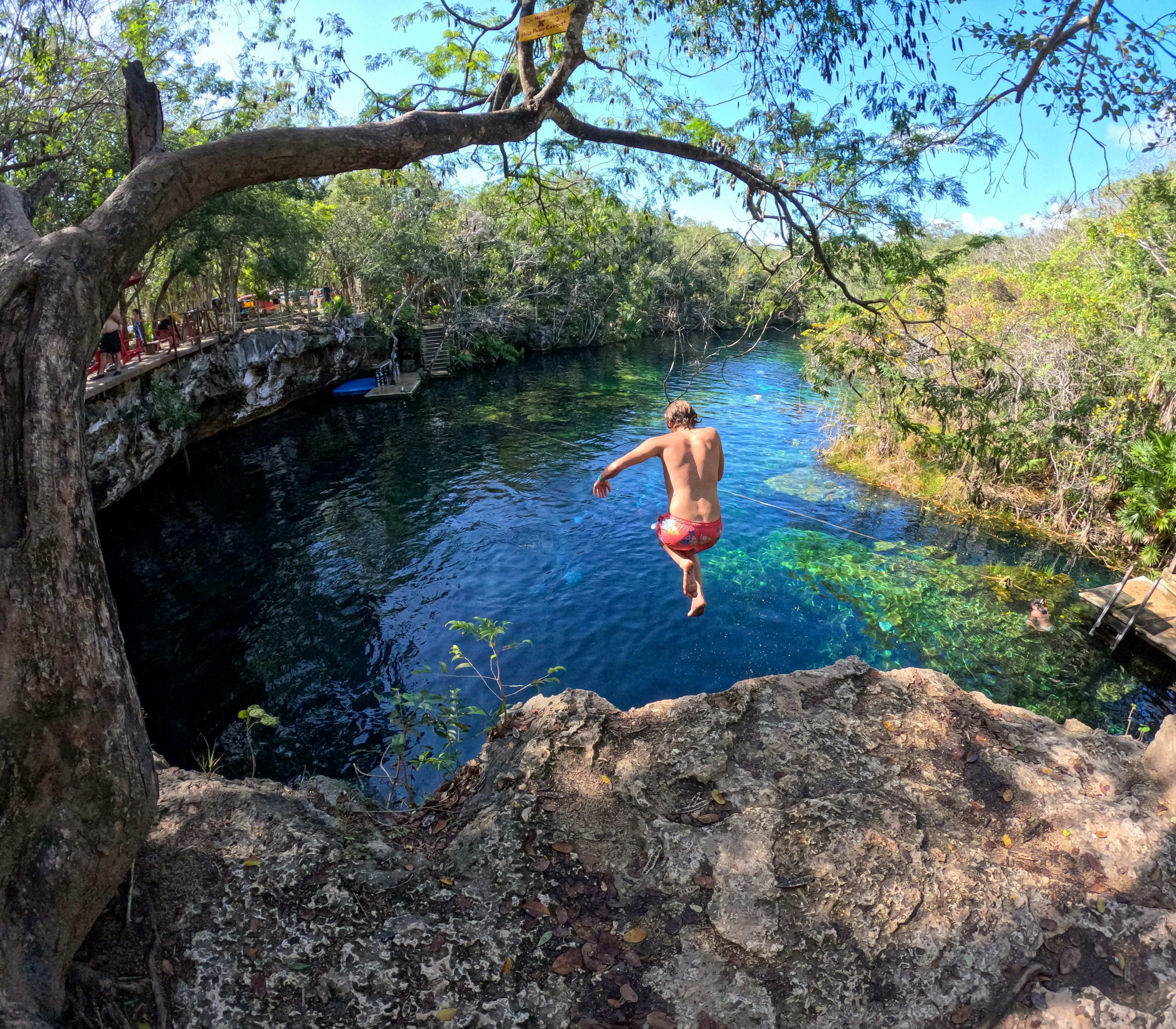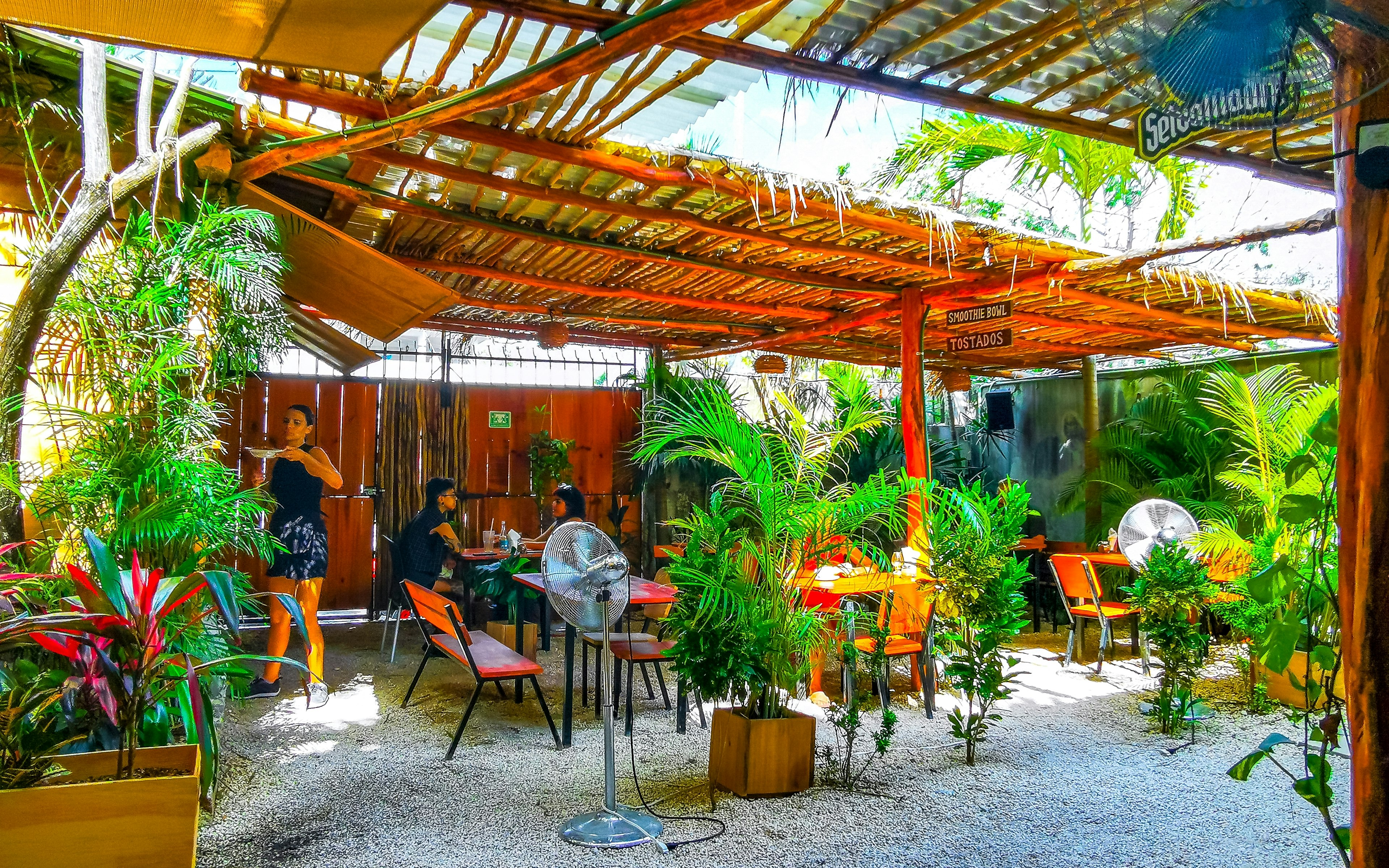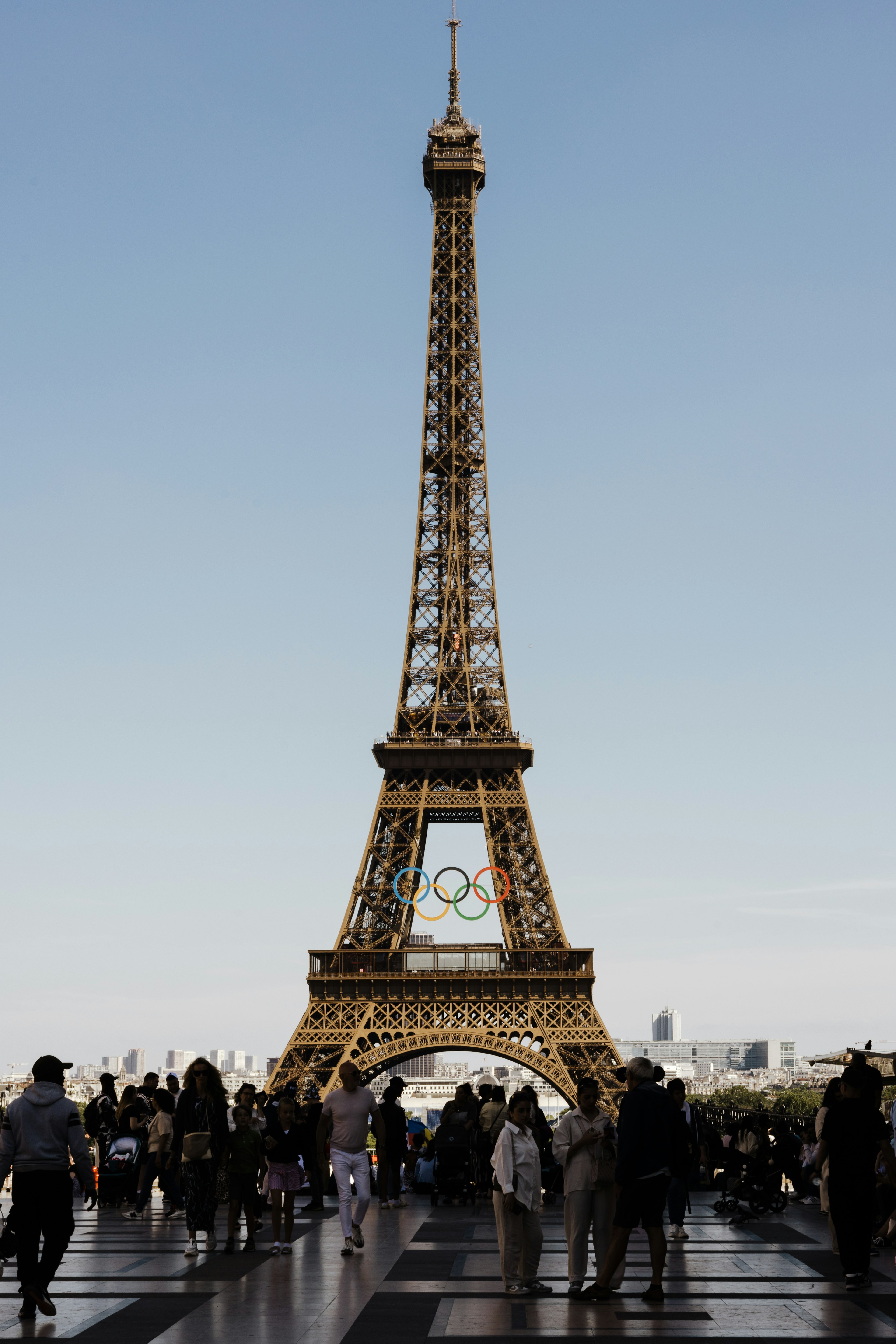At the midpoint between party-central Cancún and boho-chic Tulum, Playa del Carmen is a dynamic beach town offering everything from wellness retreats to raving parties to gourmet restaurants. It’s a favorite among digital nomads and sun-seeking families thanks to its walkable streets, easily accessible beaches, and proximity to Mayan ruins, coral reefs and cenotes (natural swimming holes).
It’s no secret that Playa del Carmen – and the Riviera Maya as a whole – is a magnet for tourists, but the beach town maintains a sense of convivial authenticity that appeals to travelers looking for a well-rounded destination. As an expat here, I have learned a thing or two about navigating this energetic beach town. Here are my first-hand tips to help you make the most of your time in Playa del Carmen.
1. Visit during shoulder season for fewer crowds and better prices
As the fastest-growing town in the Riviera Maya, Playa del Carmen attracts hordes of travelers, especially during the peak season from December to April. Picture-perfect skies and cool nights are standard – but so are high prices. And the streets bulge at the seams during Christmas and spring break.
The low season runs from May to June and from September to November. Despite the soaring temperatures, we recommend visiting during the shoulder season in July and August, when crowds are thinner. While there may be some downpours and a power outage or two if a tropical storm hits, the sun always makes an appearance in between showers.
2. Choose the best area to stay
Playa del Carmen may seem small-scale at first, but once you venture out to the various neighborhoods, you’ll find a world of verdant parks, weekend markets and authentic taquerias to discover. Centro – stretching from the ferry terminal to Calle 8 – is tourist central and the city’s bustling heart. This is where you’ll find plenty of bumping nightclubs, salsa bars and flashy souvenir stores.
Next door, Gonzalo Guerrero is a lively jumble of international restaurants, taco trucks and supermarkets sprawling to Calle 40. This area suits those who aren’t hard-core partiers but still want to be near the center of the action. Further northeast is Zazil-Ha, an up-and-coming area that appeals to medium-term visitors and creative types with its affordable short-term rentals and co-working spaces.
South of Centro lies the gated community of Playacar, which caters to couples and families with young children seeking green spaces and tranquility. Here, you’ll find several family-friendly all-inclusive resorts, plenty of short-term rentals and one of the best beaches in Playa del Carmen. Note that you’ll need to be ready to pedal or walk 15 minutes to town.

3. Check out a different beach each day
The thing that sets Playa del Carmen apart from next-door neighbors Cancún and Tulum is the town’s remarkable access to the sand. In a bid to avoid coastlines jam-packed with waterfront resorts and private beach clubs, Playa del Carmen was laid out to allow the public easy access to most of its beaches. This means that you don’t have to spend extravagant amounts on a beachfront hotel room or an overpriced day pass to enjoy the powder-puff white sand.
4. Make reservations for activities and day tours online
It’s wise to book boat tours and day trips well in advance, especially if you’re visiting in high season. (A month ahead will usually suffice.) An exception is the ferry to Isla Cozumel, which has regular departures daily and can be booked at the ferry terminal only one day ahead of travel. Making reservations beforehand also means you won’t have to deal with tourist touts and other pier-side hassles.
5. Dress casually
Leave your denim jeans or high heels at home: the fashion style in Playa del Carmen is low-key and casual. Laid-back backpackers and well-heeled travelers alike tend to sport singlets, board shorts and flip-flops by day. It’s perfectly fine to wear a linen shirt and cargo shorts to a plush dinner and even a night out at Coco Bongo.
The female dress code is just as informal, with coverups, sundresses and sandals the norm. Beachwear is a free-for-all; you won’t be judged no matter what you want to wear. Bring a light jacket for chilly nights if you’re traveling in the rainy season.
6. Walk everywhere, and seek out the side streets
One of Playa del Carmen’s winning traits is its walkability. With an efficient grid layout, this is a compact city that’s easy to navigate on foot. Most of the action is centered along Quinta Avenida (Fifth Avenue), a pedestrianized boulevard lined with knickknack shops, souvenir stands, restaurants and bars. The further you get from Fifth Avenue, the less traffic and more local hideouts you’ll find.
7. Rent a bike to go beach-hopping
Playa del Carmen isn’t quite as keen on two-wheeled transport as Tulum – yet. But it’s getting there. The city now boasts a city-wide bike-sharing system, with lime green BiciPlaya bikes for rent from numerous kiosks dotted around town. Download the app, and you’ll be able to unlock a bike and bop around town for just M$129 ($6.77) per day.
The best bike path in the city runs along Tenth Avenue, parallel to the beach, from Playacar residential area to Avenida Constituyentes. You’ll often find pedestrians spilling onto the bicycle lane, so go slowly. Avoid riding on the main avenues, as drivers tend to disregard cyclists.

8. Drive with caution and learn the traffic rules
If you’re planning to explore the ruins, cenotes and adventure parks surrounding Playa del Carmen, hiring a car will give you the freedom to explore at your own pace. While it’s relatively easy to drive in Riviera Maya, car rentals in Mexico come with their own set of challenges. You’ll find no shortage of attractive deals online – but they don’t usually include third-party liability insurance (required by law), airport fees and taxes. Be prepared to pay a higher price than your initial quote.
There isn’t a lot of traffic in Playa del Carmen itself, but once you venture to the 307 Federal Hwy, you’ll find a constant barrage of vehicles, particularly at peak hours. Watch out for the “TOPE” signs, as there are more speed bumps than you can count, even on the highway itself. Avoid driving at night, as it’s hard to see all the speed bumps and potholes in the dark.
9. Be careful of where and when you withdraw cash
Although credit cards are accepted at more and more small businesses, Playa del Carmen still runs on cash, and you’ll need small bills to enjoy its local taco joints, neighborhood bars and side-street shops.
Avoid changing money before getting to Mexico, as you won’t get the best rates. Note that not every ATM is safe to use in Playa del Carmen, as there have been cases of card cloning and counterfeit notes. Avoid the ATMs on Fifth Avenue, and always use an ATM inside a bank rather than one on the street. We recommend taking cash out at Cancún airport upon arrival for peace of mind.
Interestingly, banks and ATMs tend to have long lines at the middle and end of every month. That’s when locals get paid, and many of them are eager to withdraw their earnings. ATMs not only have a long wait at these times, but some also run out of cash.
10. Tipping is appreciated
With a vibrant restaurant culture, Playa del Carmen has a slew of dining options with varying etiquette and tipping expectations. Ten to 15% is the standard at most restaurants that don’t fall into the high-end or gourmet category. Tipping is not expected in casual cafes and local joints where you order at the counter, though most have a tip jar if you’re feeling generous.
Note that prices listed on menus in Mexico represent the total price; neither taxes nor tips are supposed to be added. Some restaurants offer a suggested sum for tips, which is fine; others sneak the tips into the total price, which is not. Make sure to always check your bill carefully.
11. Learn some Spanish to blend in
Hassling is common on the streets of Playa del Carmen, especially along tourist-clogged Fifth Avenue and Parque Fundadores. Sure, you can get by without speaking a word of Spanish as English is commonly spoken here – just be prepared to pay gringo prices. If you want to be treated fairly, learn some Spanish vocabulary that goes beyond the standard “Una cerveza, por favor!” (“A beer, please!”).
For those planning to stay more than a week in town, sign up for an intensive Spanish class at the established International House Riviera Maya. If you already have a basic level, join in the free conversation evenings run by Chichén Itzá Language School to meet new people and improve your language skills over cocktails.

12. What to know about cartel activity in Playa del Carmen
An unfortunate string of shootings has plagued Playa del Carmen in recent months, sounding alarm bells in the tourism industry. Two Canadian tourists were shot dead in Hotel Xcaret in January 2022, and the manager of Mamitas Beach Club was found murdered in the same week. The Mexican authorities have admitted an increasing presence of drug-related crime in Playa del Carmen.
Be mindful that the crimes here are usually organized and cartel-related, and violence tends to be targeted rather than random acts of terror. Playa del Carmen, for the most part, is safe for tourists and expats who steer clear of illicit activities. The only way most tourists interact with cartel members is when they buy drugs – and make no mistake: all the dealers are part of a cartel.
It is important to always keep your wits about you and stay vigilant. Keep yourself informed of the latest happenings in Playa del Carmen before you travel.
13. Don’t be alarmed by the presence of police and military
Don’t be surprised to find military troops and police cars whizzing through the streets of Playa del Carmen: recent incidents have caused a need for heightened security. Several police checkpoints have been set up along the 307 Hwy, including one at the Playa del Carmen exit.
Since the police will do random checks and ask for your documents, make sure you have your rental contract and valid driver’s license within easy reach. If you’ve violated a traffic rule, there’s a chance you’ll be asked to pay a fine. Tickets are never paid on the streets, so any request for cash is a request for a bribe. Ask politely to have the ticket written and offer to pay it at a police station instead. This way, you won’t be feeding corruption, and the fine will usually cost you less than the bribe.
14. Don’t do drugs or get drunk on the streets
With a raving bar scene, Playa del Carmen inevitably has its fair share of petty theft and robberies, which tend to happen at night. Solo travelers should avoid getting drunk alone or taking drugs on the streets. Stick with your group if you plan on late-night shenanigans. Keep an eye on your drink, and don’t accept drinks from strangers.
15. Be aware of common scams
Mexicans are a friendly bunch – yet it can be hard to differentiate between genuine hospitality and a sales gimmick. Follow the rule of not trusting anyone selling on the streets, and you’ll do just fine. When a local approaches you saying, “Do you remember me? I’m your waiter!” just smile, nod and walk away. It’s almost certain that your “friend” is just trying to lure you into their overpriced shop.
A common scam in Playa del Carmen (one familiar to expats) is the distraction scheme. A couple usually approaches and offers to clean the bird poop from your hair or the tomato ketchup on your back, distracting you and thus swiping your valuables while your guard is down.
16. Know the price you should pay before getting in a taxi
Uber does not operate in Playa del Carmen, but official white-and-green cabs are readily available. They tend to charge tourists more than residents, so check with a local to suss out how much you should pay. Always agree on a price before getting in: a ride within Centro should not be more than M$50 ($2.50). Alternatively, ask your Airbnb host or hotel concierge for a reliable driver that you can contact through WhatsApp.
17. Don’t drink the tap water
The water in Playa del Carmen is not potable, and you should never drink water from the faucet. It is OK, however, to brush your teeth using it, and many find local tap water acceptable for rinsing vegetables, cooking pasta and washing rice. The water served at restaurants is always purified drinking water, and so is the ice, so feel free to ask for a vaso de agua when you dine out.
Several companies in Playa del Carmen deliver large 20-liter barrels of purified water right to your doorstep. You can also stock up at any OXXO convenience store in town; there’s one at almost every corner in the town center.
















